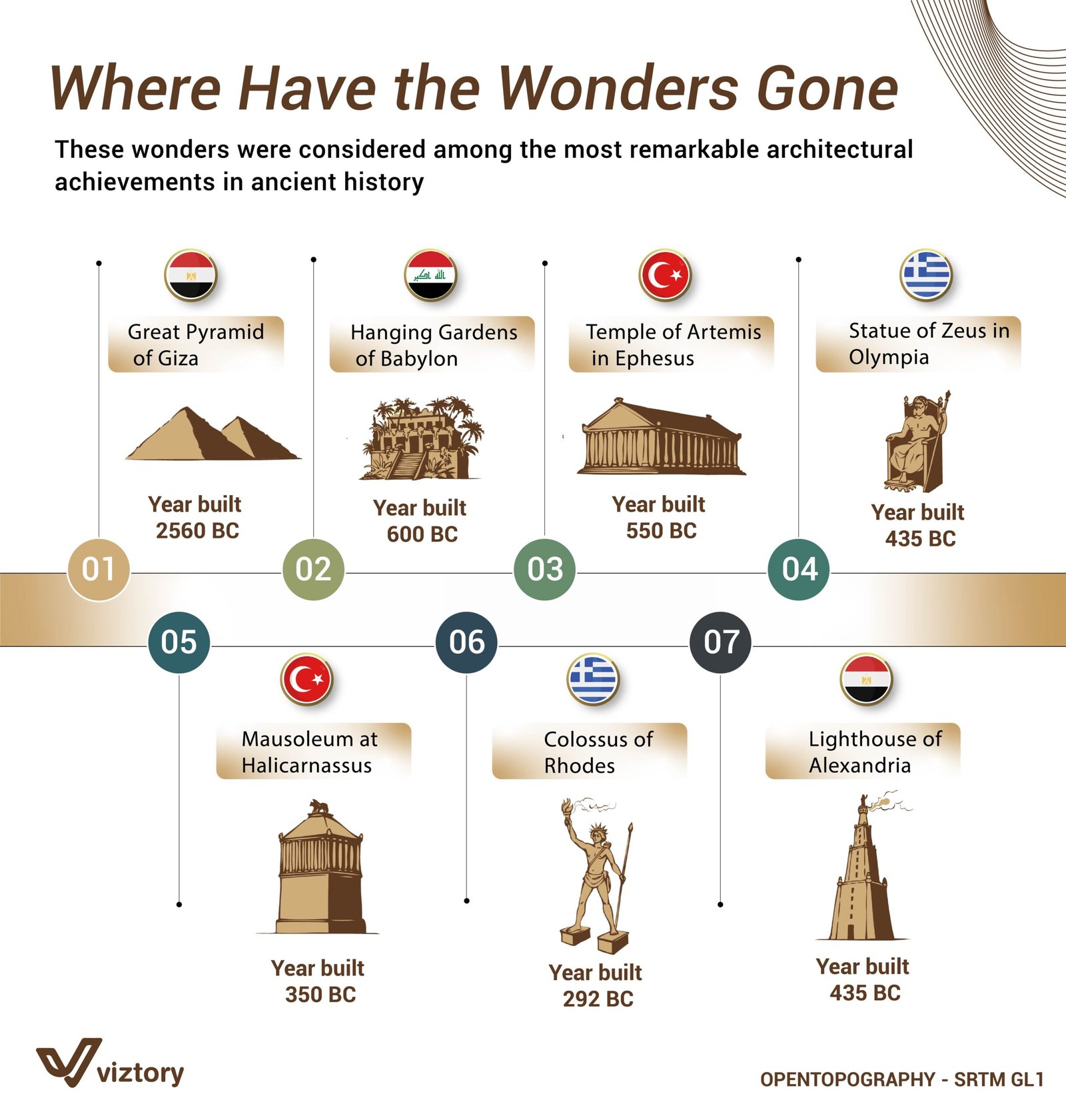Wonders of the Ancient World: Economic and Tourism Perspectives
-
Aug, Sun, 2024
Wonders of the Ancient World: Economic and Tourism Perspectives
The wonders depicted in the Visualization — ranging from the Great Pyramid of Giza to the Lighthouse of Alexandria—represent some of the most extraordinary architectural feats of the ancient world. These structures were not only marvels of engineering and artistry but also powerful drivers of economic activity and tourism, both in their time and today.
Economic Impact of Ancient Wonders
1. Economic Activity in Ancient Times: The construction of these wonders involved considerable economic investment, from the labor and materials required to build them to the ancillary industries that sprang up around their construction. For instance, the building of the Great Pyramid of Giza, around 2560 BC, likely stimulated local economies by providing employment opportunities and increasing the demand for resources like stone, tools, and food for the workers. Similarly, the Mausoleum at Halicarnassus and the Temple of Artemis not only showcased the wealth and power of their respective regions but also required substantial economic resources, contributing to the prosperity of the regions.
2. Long-term Economic Influence: Over time, these wonders became symbols of cultural identity and pride, attracting visitors from across the ancient world. This influx of visitors would have boosted local economies through trade and the hospitality industry, much as tourism does today. The Colossus of Rhodes, for example, stood as a testament to the city’s resilience and attracted merchants and travelers, enhancing Rhodes’ position as a trade hub.
Tourism and Modern Economies
1. Tourism in the Modern Era: Though only one of these wonders, the Great Pyramid of Giza, still exists today, the legacy of all seven has continued to influence global tourism. Sites associated with the lost wonders still draw visitors eager to explore the remnants of ancient history. For instance, the ancient city of Ephesus in Turkey, where the Temple of Artemis once stood, remains a popular tourist destination, contributing significantly to the local and national economy.
2. Economic Benefits of Cultural Tourism: Cultural tourism, driven by interest in historical sites and artifacts, is a significant contributor to many national economies. Egypt, for example, continues to benefit economically from the millions of tourists who visit the Great Pyramid each year. This sustained interest in ancient wonders highlights the lasting economic value of these sites, encouraging countries to preserve their cultural heritage.
3. Challenges and Opportunities: The preservation and promotion of ancient wonders present both challenges and opportunities for modern economies. On the one hand, maintaining these sites requires significant investment and careful management to prevent damage from over-tourism. On the other hand, the potential economic benefits are immense, as these wonders attract not only tourists but also international funding and partnerships aimed at conservation.
Conclusion
The wonders of the ancient world, as represented in the image, are more than just relics of a bygone era; they are enduring symbols of human ingenuity and economic potential. From their construction to their influence on modern tourism, these wonders continue to play a crucial role in shaping economies. By understanding and leveraging their historical and cultural significance, modern societies can ensure that these wonders continue to contribute to economic and tourism growth for generations to come.

